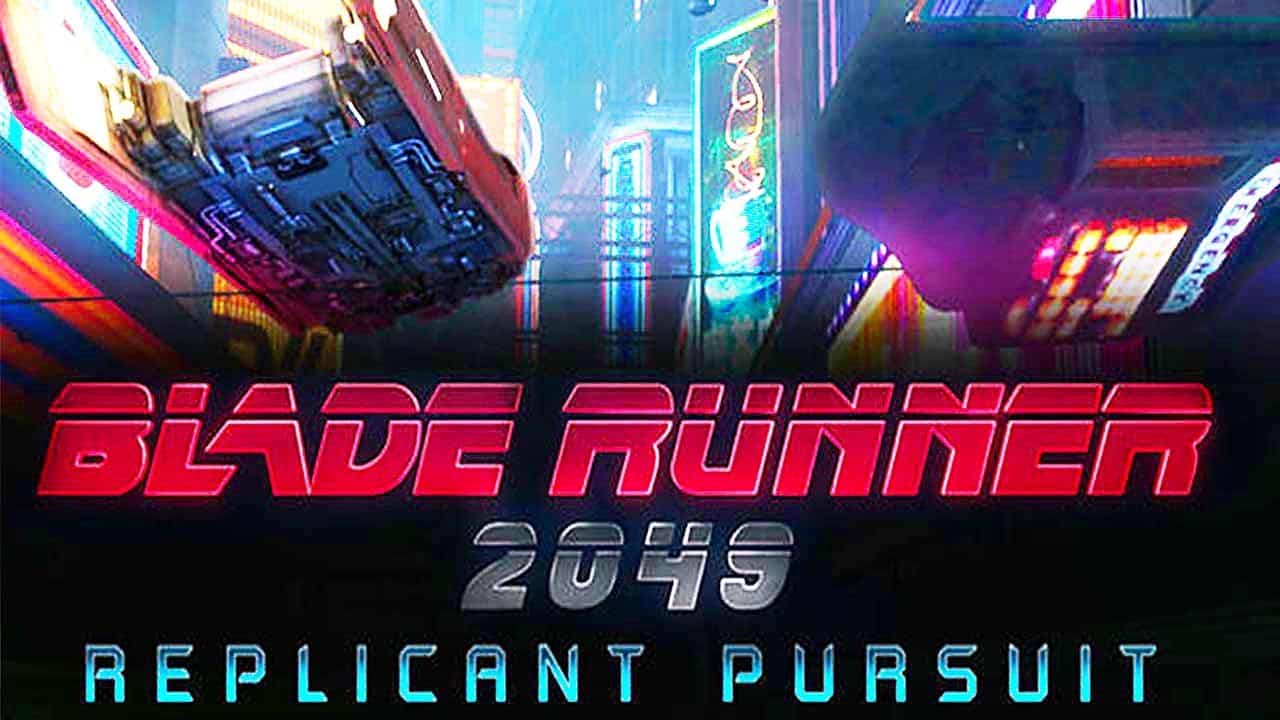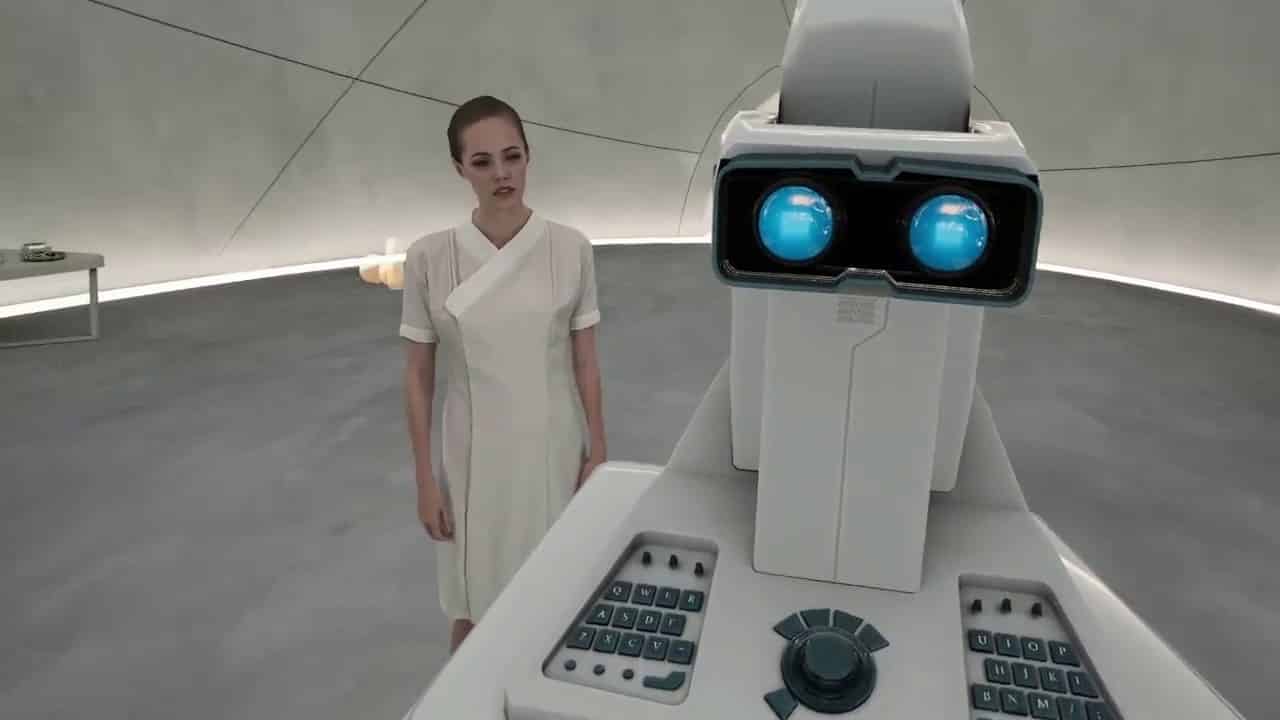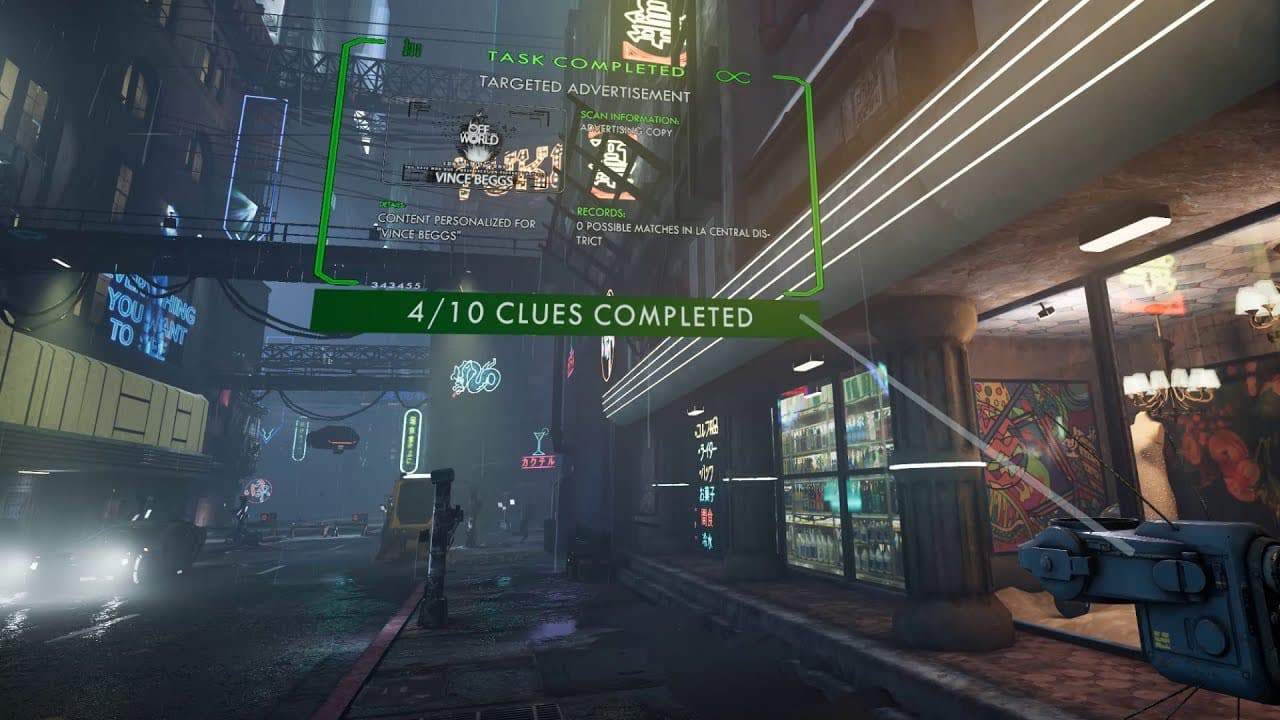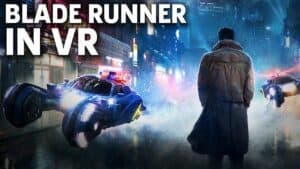We finally carved out some time to go see Blade Runner 2049 and try out the Blade Runner VR experiences. With the movie’s focus on VR, AR, AI, replicants, it’s been on our list (along with the upcoming Ready Player One). The philosophical questions around memory (is a synthetic memory real?) and the dissolving boundaries between the real and the virtual increasingly come up in our workshops and discussions.
While not doing as well as expected at the box office, we’ll go with the consensus at Rotten Tomatoes; the film is “visually stunning and narratively satisfying.”
Given the subject, Blade Runner 2049 is an ideal candidate for virtual reality. So it was no surprise when Oculus announced a partnership with Warner Brothers at Oculus Connect 2016 to do a trilogy of VR experiences around the movie. Two of the experiences are now available and they illustrate the importance of storytelling in VR.
And why it’s smart to avoid chase scenes with our current hardware.
Replicant Pursuit – all movement, no story
 The first Blade Runner VR experience, Replicant Pursuit was released back in July to decidedly mixed reviews. In Polygon, Julia Alexander wrote,
The first Blade Runner VR experience, Replicant Pursuit was released back in July to decidedly mixed reviews. In Polygon, Julia Alexander wrote,
Out of all the VR experiences and games I’ve played, Replicant Pursuit is one of the most vibrant, but that art only goes so far. When the entire experience is bogged down by waves of nausea, it’s hard to enjoy the art as much as I wanted to.
While we didn’t get “bogged down” by nausea, the potential was close at hand. Chase scenes are tough in VR, especially when your eyes need to continually refocus on moving objects. There also wasn’t much of a story here – even if what you’re chasing is a replicant from a well-known movie plot, it was lacking context.
The scenes of a futuristic, dystopian LA in the experience are stunning. But the visuals are lost in the action.
The new Blade Runner VR experience
The new VR experience for the movie is Memory Lab, which is available on Oculus Rift and Samsung Gear VR. In terms of design and execution, it’s a world of difference from Replicant Pursuit. It makes the latter feel like a promotion for the film.
Memory Lab is a 25-minute experience that takes you on a fascinating journey. You’re immersed in the same stunning visuals, but it’s the arc of the story shapes the experience.

The real storyline here is not in the movie. Your goal as a replicant is to hunt down runaway replicants. But in doing so, you mistakenly kill a human. Oops. You’re sent back to the Wallace Corp. Memory Lab where a woman intends to wipe out your memory. Since it turns out that fake memories have been implanted in you, you have to go back to the scene of the crime to investigate what happened.
And ultimately determine what’s real – that recurring question in Blade Runner.

It’s too bad that the experience fails in the last section as the gameplay takes on almost 90’s feel of point-and-click. But it’s a great VR detective story and the environments are stunning. Some of it is based on lidar scans from the film but other scenes are built from scratch.
Microsoft’s Holo Capture
What intrigued us most was the use of Microsoft’s Holo Capture to create the characters. It’s a volumetric capture technique that fully captures the movements of an actor. It pushes the VR experience much closer to a theatrical performance and removes the synthetic feel of polygon-based game characters.
Venture Beat did an interview with Ben Grossman, executive producer at Magnopus, the Los Angeles studio that built the title for the Oculus Rift.
Right around that time, Microsoft Holo Capture was just getting out of alpha and being put into the world. We decided to take the last mile integration there and use Holo Cap to capture actors, so it wasn’t just traditional game engine, video game characters. Then we put the audience in there and made a new storyline that explores some of the threads of the movie that haven’t fully been explored yet.
The end result as DigitalTrends said of the experience,
. . . is not much of a game, nor much of a film either, but it’s a fascinating look at the possibilities of the future of VR entertainment.
Sam Machkovech in ArsTechnica added that
. . . this 25-minute experience is the most polished execution of VR-for-film I’ve ever seen, and it may herald the true beginning of VR films with actual human actors.
Blurring the real and the virtual
The Blade Runner 2049 movie is a mishmash of different themes but a major one is the dissolving boundaries between the virtual and the real. And in a way, the Memory Lab VR experience does the same; using Holo Capture gives the characters an uncanny realistic presence. You aren’t interacting with polygons clothed in textures but real actors.
It’s as if you are placing real people in a synthetic game environment – which in a sense, is exactly what you’re doing. Someday down the road, we’ll be doing the reverse – placing the synthetic in the real – which is exactly what the Blade Runner series is about.
Putting aside the shallow gameplay and mediocre acting, this is the Blade Runner VR experience you need to see. It’s another example of the film industry pushing the limits of immersive experiences, along with Peter Jackson’s AR experiment and Alejandro G. Iñárritu’s CARNE y ARENA (Virtually present, Physically invisible).
The short trailer below doesn’t do it justice, but it gives you a sense of what to expect.
You’ll be seeing a lot more of this in the future.
Emory Craig is a writer, speaker, and consultant specializing in virtual reality (VR) and artificial intelligence (AI) with a rich background in art, new media, and higher education. A sought-after speaker at international conferences, he shares his unique insights on innovation and collaborates with universities, nonprofits, businesses, and international organizations to develop transformative initiatives in XR, AI, and digital ethics. Passionate about harnessing the potential of cutting-edge technologies, he explores the ethical ramifications of blending the real with the virtual, sparking meaningful conversations about the future of human experience in an increasingly interconnected world.

